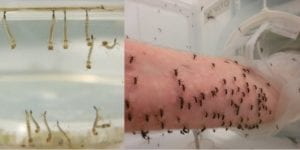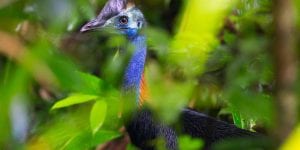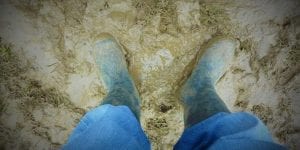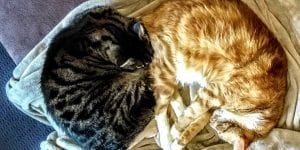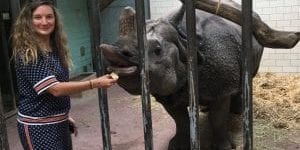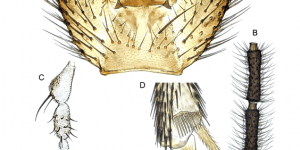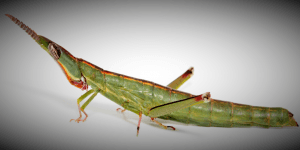pearg
-
How to Tackle the Climatic Threats to Australia’s Eco-System | Ary interviewed on 102.7 3RRR
Please follow this link to Ary’s recent interview on Three Triple R FM -
Living a life of luxury in the laboratory
Words and images: Perran Ross Mosquitoes in the wild live it rough. Adult females risk being swatted as they search for a blood meal and their larval progeny must fend off predators and compete for limited resources. When we want to study mosquitoes under controlled conditions we bring them into the laboratory, but these conditions […]blogs.unimelb.edu.au/pearg/2018/11/29/living-a-life-of-luxury-in-the-laboratory
-
NEW PUBLICATION | Impacts of recent climate change on terrestrial flora and fauna: Some emerging Australian examples
Words: Nick Bell Header image: Johan Larson, Department of Tropical Biology, James Cook University Together with a team of experts from across Australia, PEARG has recently published an open access review in Austral Ecology. The review outlines eight case studies which demonstrate the effects of climate change on the nation’s native flora and fauna. We’ve […] -
Collecting Rhynchosciara: an important fly in the history of genetics
Words and images: Ann Stocker Rhynchosciara species are endemic to South and Central America. The larvae are readily observed because they are a centimeter or more in length, usually reddish in colour and travel in groups of dozens to hundreds of individuals (Fig 1). However, they only came to the attention of biologists after Crodowaldo […] -
In the ‘field’ of science
Words: Samantha Ward If I ask you what is involved in studying for a PhD, a Doctor of Philosophy, a higher or postgraduate degree in science, what do you envisage? The terms are different, but I’m sure the image is the same. How do you imagine a Science PhD? Credit: Cindy Schultz via Flickr Most people […] -
The platypus: another impending extinction?
Words: Samantha Ward The duck-billed platypus has always been something of an enigma. When the first pelt and sketch were sent back to Europe at the end of the 18th century, many British scientists refused to accept the platypus was a real organism. Instead, they believed it was an assortment of animal parts that had been […]blogs.unimelb.edu.au/pearg/2018/11/01/the-platypus-another-impending-extinction
-
A cat-astrophe waiting to happen!!!
Words: Samantha Ward Friend or foe? When you look at your fluffy pet cat curled up beside you on the sofa, do you see a cute companion or a calculating killer? Cute companion or calculating killer? Credit: Author’s own. I’m going to assume the former, but now let me ask you this: Do you let […]blogs.unimelb.edu.au/pearg/2018/11/01/a-cat-astrophe-waiting-to-happen
-
Zoos – the good, the bad and the ugly
Words: Samantha Ward We’re going to the zoo, zoo, zoo. How about you, you, you…?” Perhaps you remember singing the song when you were a child. If you do, you probably have it stuck in your head now! If you don’t, I’m sure you remember those fun-filled zoo days watching gigantic elephants spraying themselves with […]blogs.unimelb.edu.au/pearg/2018/11/01/zoos-the-good-the-bad-and-the-ugly
-
Congratulations to Ann Stocker | fungus gnat species named
Image credit: Zootaxa Congratulations to Ann for being recognised for her extensive contributions to our understanding of Australian flies. A species of Victorian fungus gnat (Diptera: Sciaridae) has been formally described and named Austrosciara stockerae. You can read about the taxonomic details in a recent Zootaxa article here. The dedication blurb A bit about Ann […]blogs.unimelb.edu.au/pearg/2018/10/24/congratulations-to-ann-stocker-fungus-gnat-species-named
-
The diversity of Aussie grasshoppers | Part two
Words and images: Vanessa White Some important lessons learnt and new questions around Vandiemenella laboratory rearing In the previous grasshopper blog, I reported “reasonable success with room for improvement” in our attempts to rear Vandiemenella grasshopper nymphs in the laboratory. Alternative housing is an important focus for improvement, but a discussion with Mike and Ary […]blogs.unimelb.edu.au/pearg/2018/10/15/the-diversity-of-aussie-grasshoppers-part-two
Number of posts found: 112

